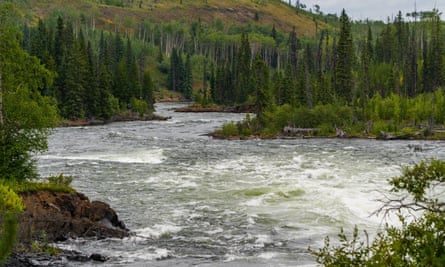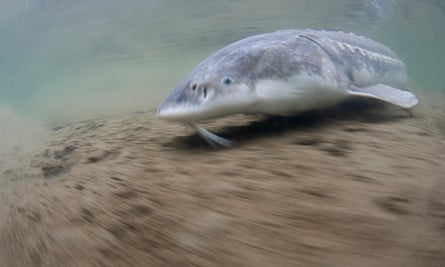Sandra Mardenfeld - Yesterday
Dinosaurs continue to fascinate, even though they became extinct 65 million years ago. These powerful creatures prowled the Earth for about 165 million years before mysteriously disappearing (via U.S. Geological Survey). Still, people's ardor for this group of reptiles is so passionate that 12% of Americans surveyed in an Ipsos poll would resurrect T. rexes and the rest of these mysterious creatures if it were possible.

dinosaur tyrannosaurus rex© FOTOKITA/Shutterstock
There is still much unknown about these prehistoric animals. In fact, there are probably dinosaur types that still remain unidentified, reported Smithsonian Magazine. Despite more than 200 years of study, paleontologists have named only several hundred species. Though this might seem like a large number, a study in the Proceedings of the National Academy of Sciences said it's possible that more than 1,800 different kinds of dinosaurs walked the earth. The study of these creatures is limited to the fossils they left behind — and those provide an incomplete picture. A fossil, after all, is only created under precise circumstances, with the dinosaur dying in a place that could preserve its remains in rock. While some lived near a river, lake, lagoon, or another place where sediment was found, many thrived in other habitats.
Another question about dinosaurs is what caused their extinction ... and there are many theories about that, too. What we do know is that during the Jurassic period, great global upheaval occurred with increases in temperature, surging sea levels, and less humidity. Some scientists say this destroyed the dinosaurs; others believe they thrived during the period.
What Killed The Dinosaurs?

asteroid earth space© Hamara/Shutterstock
Many theories exist about why the dinosaurs disappeared from the Earth. Could it be a comet, asteroid, or meteor that crashed into the planet, and the reverberations ended the reign of the dinosaurs? Was it a fierce volcanic eruption that toppled these creatures? Robert DePalma, a curator at the Palm Beach Museum of Natural History, found some rare fossils close to Bowman, North Dakota, in 2013 that led to a hypothesis of his own. The site, dubbed "Tanis," first underwent excavation in 2012, with DePalma and his team digging along a section known as the Hell Creek Formation (via Boredom Therapy).
Underneath a freshwater paddlefish skeleton, a mosasaur tooth appeared. This dinosaur, a giant reptilian, lived during the Early Cretaceous period in oceans. DePalma and his group knew the creature could not have survived in North Dakota's fresh waters during the prehistoric age. But there were other inconsistencies at the excavation site — the fossils they found seemed out of place, with some skeletons located in vertical positions. Plus, tektites, pieces of natural glass formed by a meteor's impact, were scattered amid the soil. All of these factors seemed strange and confused the paleontologists. Could this provide evidence to the theory that an asteroid did indeed cause the mass extinction of the dinosaurs? This explanation was proposed long before DePalma's discovery. Some scientists cite the KT layer — a 66-million-year-old section of earth present through most of the world, with a high iridium level — as proof that this is so.
An Excavation Offers New Information

fossil of a mosasaur tooth© Mark_Kostich/Shutterstock
The 112-mile Chicxulub crater, located on the Yucatán Peninsula, contains the same mineral — iridium — as the KT layer, and it's often cited as further proof that a giant asteroid was responsible for killing dinosaurs (per Boredom Therapy). Disbelievers of this supposition, though, point to the lack of fossils in the KT layer as proof that this thesis is false — more fossils are discovered some 10 feet underneath the layer. This means that the skeletons located there are older than the asteroid that hit the earth, suggesting that some other event, like widespread volcanic eruptions or even climate change, did the dinosaurs in even before the asteroid appeared.
Related video: Did dinosaurs have polkadots and feathers?
Duration 2:28
View on Watch

DePalma believed that the fossils found in Tanis, which sat on the KT layer, became collected there just after the asteroid struck the earth. He suggested that the impact caused huge seiches (or tsunamis), which allowed the mosasaur tooth to travel from fresh water to that spot, along with freshwater sturgeon that may have choked on glassy pieces from the collision, reported Science. "That's the first ever evidence of the interaction between life on the last day of the Cretaceous and the impact event," team member Phillip Manning, a paleontologist at the University of Manchester in the United Kingdom, told the publication.
Some scientists were not happy with this proposal. "I hope this is all legit — I'm just not 100% convinced yet," said Thomas Tobin, a geologist at the University of Alabama in Tuscaloosa.
Two Sides Of A Theory

sea turtle fossil© Mike Brake/Shutterstock
Some scientists question Robert DePalma's methods. The site, after all, does not conclusively prove that the asteroid's impact actually caused the dinosaurs' demise, reported Science. It could be just one factor in a series of environmental events that led to their extinction. "I'm suspicious of the findings. They've been presented at meetings in various ways with various associated extraordinary claims," a West Coast paleontologist said to The New Yorker. "He could have stumbled on something amazing, but he has a reputation for making a lot out of a little."
According to Science, DePalma was incorrect in 2015 when he believed he discovered a bone from a new type of dinosaur. He had already named the genus Dakotaraptor when others identified it as belonging to a prehistoric turtle. While DePalma corrected his claim, his reputation still took a hit. According to The New Yorker, DePalma also sports some off-putting paleontology practices, like keeping his discovery secret for so long and limiting other scientists' access to the site. Others defend DePalma, like his co-author, Mark Richards, a geophysicist at the University of California, Berkeley. "That some competitors have cast Robert in a negative light is unfortunate and unfair," Richards told Science.
Some of the gripes occurred because DePalma first shared his story with a mainstream publication, The New Yorker, instead of a more academic-based journal, said Bored Therapy. He later wrote a piece for the Proceedings of the National Academy of Sciences.
The Importance Of The Dinosaurs' Death

dinosaurs after asteroid hits© ronniejcmc/Shutterstock
Robert DePalma made headlines again in 2021 with the discovery of a leg from a Thescelosaurus dinosaur at Tanis, reported The Washington Post. The paleontologist believed that this new information further supported the theory that an asteroid killed the dinosaurs — along with 75 percent of the animals and plants on Earth — 66 million year ago. "We're never going to say with 100 percent certainty that this leg came from an animal that died on that day," the scientist said to the publication. "The thing we can do is determine the likelihood that it died the day the meteor struck. When we look at the preservation of the leg and the skin around the articulated bones, we're talking on the day of impact or right before. There was no advanced decay."
Since Tanis became an excavation site, several other fossils were found, including a pterosaur embryo. Petrified fish with glass spheres, called ejecta, were also at the site. DePalma purported that these animals died during the asteroid's impact since the glass's chemical makeup indicates an extraordinary explosion — something similar to the detonation of 10 billion bombs. "I've been asked, 'Why should we care about this? Dinosaurs have been dead for so long,'" DePalma told The Washington Post. "It's not just for paleo nerds. This directly applies to today. We're seeing mass die-offs of animals and biomes that are being put through very stressful situations worldwide. By looking through this window into the past, we can apply these lessons to today."




















